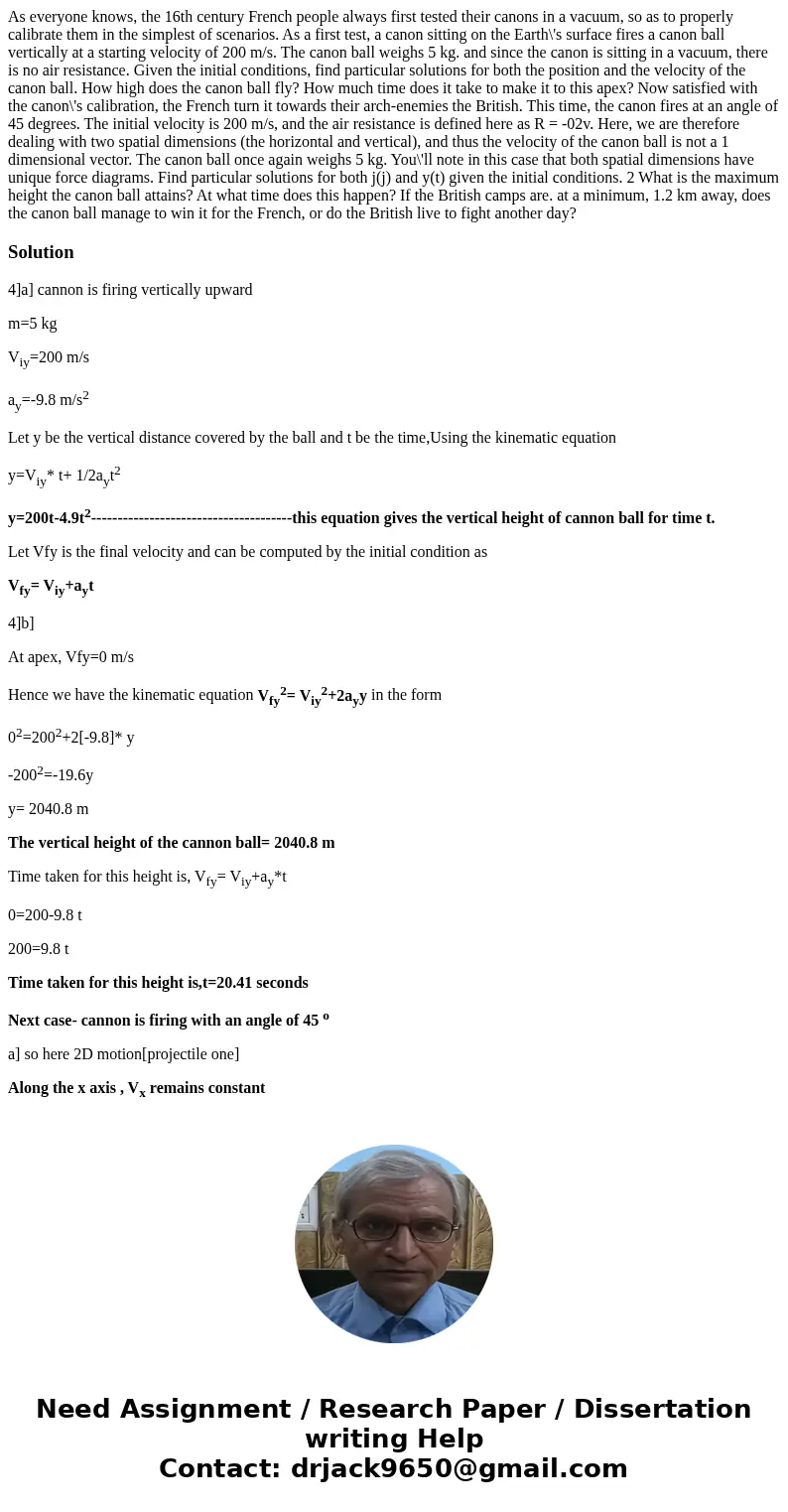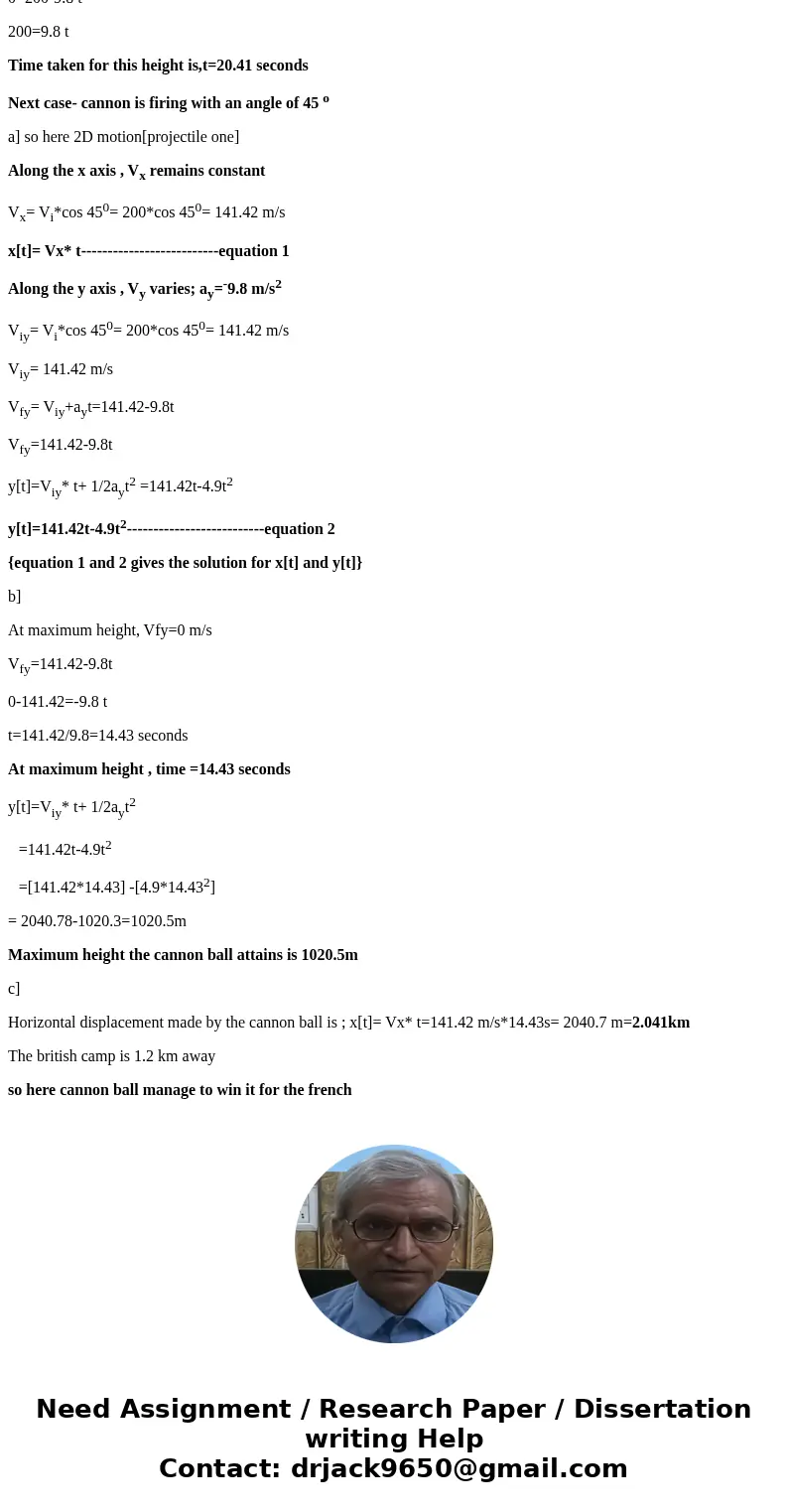As everyone knows the 16th century French people always firs
Solution
4]a] cannon is firing vertically upward
m=5 kg
Viy=200 m/s
ay=-9.8 m/s2
Let y be the vertical distance covered by the ball and t be the time,Using the kinematic equation
y=Viy* t+ 1/2ayt2
y=200t-4.9t2--------------------------------------this equation gives the vertical height of cannon ball for time t.
Let Vfy is the final velocity and can be computed by the initial condition as
Vfy= Viy+ayt
4]b]
At apex, Vfy=0 m/s
Hence we have the kinematic equation Vfy2= Viy2+2ayy in the form
02=2002+2[-9.8]* y
-2002=-19.6y
y= 2040.8 m
The vertical height of the cannon ball= 2040.8 m
Time taken for this height is, Vfy= Viy+ay*t
0=200-9.8 t
200=9.8 t
Time taken for this height is,t=20.41 seconds
Next case- cannon is firing with an angle of 45 o
a] so here 2D motion[projectile one]
Along the x axis , Vx remains constant
Vx= Vi*cos 450= 200*cos 450= 141.42 m/s
x[t]= Vx* t--------------------------equation 1
Along the y axis , Vy varies; ay=-9.8 m/s2
Viy= Vi*cos 450= 200*cos 450= 141.42 m/s
Viy= 141.42 m/s
Vfy= Viy+ayt=141.42-9.8t
Vfy=141.42-9.8t
y[t]=Viy* t+ 1/2ayt2 =141.42t-4.9t2
y[t]=141.42t-4.9t2--------------------------equation 2
{equation 1 and 2 gives the solution for x[t] and y[t]}
b]
At maximum height, Vfy=0 m/s
Vfy=141.42-9.8t
0-141.42=-9.8 t
t=141.42/9.8=14.43 seconds
At maximum height , time =14.43 seconds
y[t]=Viy* t+ 1/2ayt2
=141.42t-4.9t2
=[141.42*14.43] -[4.9*14.432]
= 2040.78-1020.3=1020.5m
Maximum height the cannon ball attains is 1020.5m
c]
Horizontal displacement made by the cannon ball is ; x[t]= Vx* t=141.42 m/s*14.43s= 2040.7 m=2.041km
The british camp is 1.2 km away
so here cannon ball manage to win it for the french


 Homework Sourse
Homework Sourse